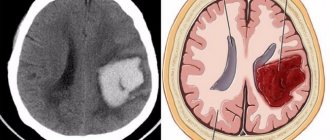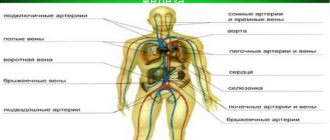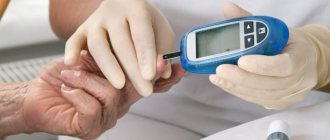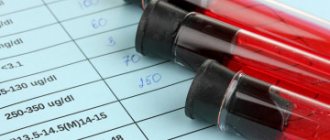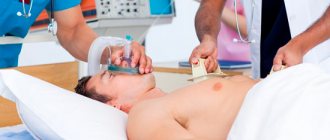Signs of capillary bleeding and differences from venous
Capillary bleeding, which can be stopped with the help of improvised means, has characteristic symptoms. When small vessels rupture, liquid connective tissue spills into the cavity of the internal organs or into the external environment.
Main features:
- the blood flowing from the capillaries is bright red;
- there is no pulsation;
- biological fluid is released evenly and in small quantities;
- the wound is bleeding over the entire area.
In most cases, in people who do not have vascular diseases, the hemorrhage stops on its own, even if a large area is injured. With internal bleeding, connective fluid is present in tracheobronchial secretions, vomit or feces, as well as in urine.
Often internal hemorrhages are asymptomatic.
The latent form is recognized by a number of characteristic features:
- blood pressure surges;
- superficial weak pulse;
- increased heart rate;
- feeling of dry mouth;
- partial short-term loss of vision;
- dizziness;
- general weakness, fatigue;
- cyanosis or pallor of the skin.
The patient may experience aching pain at the site of the rupture. It is almost impossible to detect internal bleeding on your own. The patient should go to the nearest medical facility, where a specialist will examine him and prescribe a comprehensive examination.
Capillary bleeding is difficult to confuse with venous bleeding. When a large vessel ruptures, connective fluid flows out of the wound in a stream and has a dark burgundy color. The bleeding is continuous and profuse, there is no pulsation.
Causes and symptoms of hemorrhage
Capillaries are the smallest vessels, damage to which is considered not life-threatening. In most cases, capillary hemorrhage does not harm health and stops spontaneously.
Capillary bleeding is quite easy to identify, with bright red blood oozing from the damaged area. Blood flows out of the wound slowly, there is no pulsation, since the blood pressure in these vessels is low.
The coagulation system instantly reacts to capillary damage. The blood vessel contracts, blood flow slows down, and blood loss decreases. Platelets and fibrin fibers form a blood clot that closes the damaged area. This process takes from 3 to 5 minutes.
Capillary bleeding occurs for the following reasons:
- Burns;
- Cuts, abrasions;
- Thrombocytopenic purpura - increased bleeding due to a low concentration of platelets in the blood;
- Hemophilia – decreased blood clotting;
- Pseudogemophilia – spontaneous bleeding due to increased vascular permeability;
- Oncological formations;
- Purulent inflammation of the skin, which damages blood vessels;
- Atherosclerotic damage to capillaries;
- Tissue necrosis due to various diseases;
- Hormonal imbalance.
The pathologies described above provoke damage to the walls of blood vessels and hemorrhage.
A sign of external capillary bleeding is that the blood flows outward, and with internal bleeding, it is released from the vessels of the internal organs (stomach, intestines, uterus) into the body cavity.
With capillary hemorrhage, blood flows out evenly over the entire surface of the wound or in a thin stream.
With significant blood loss, the victim complains of weakness, drowsiness, his skin turns pale, and the oral mucosa dries out. In addition, the pulse quickens and blood pressure decreases. In some cases, dizziness, nausea, shortness of breath occur, vision becomes dark, and a person may lose consciousness.
Next, you will learn how to stop capillary bleeding, what needs to be done to provide first aid, how to apply a tourniquet correctly, and what mistakes happen during first aid.
Types of capillary bleeding
Capillary bleeding (it can be stopped in several ways) is classified according to the location of the vessel rupture (external and internal) and the reason for its appearance:
| Impact factors | Description |
| Injuries | Thermal and chemical burns. They occur due to skin contact with hot liquids, acids and other substances. Provoke external bleeding. |
| Abrasions, cuts. Appear as a result of a blow or fall. Cause external hemorrhages. | |
| Coagulopathic changes | Von Willebrand's disease. A hereditary pathology is accompanied by spontaneous rupture of small blood vessels. There is a deficiency of plasma von Willebrand factor. |
| Hemophilia. The disease is inherited. The pathology is characterized by a violation of the blood clotting process. When blood vessels rupture, biological fluid penetrates into the cavity of internal organs, joints and muscles. | |
| Hemorrhagic diathesis (thrombocytopenic purpura). Internal hemorrhages occur against the background of a sharp decrease in the number of platelets. | |
| Pathological changes | Hormonal disorders. A deficiency of organic compounds produced by the endocrine glands leads to thinning of blood vessels. |
| Necrosis. When cells die, the blood circulation in the affected area is disrupted. The walls of blood vessels become fragile. | |
| Atherosclerosis. The pathology is characterized by the growth of fatty plaques inside blood vessels. There is a narrowing and deformation of the lumen of the capillaries. | |
| Inflammatory processes. Capillaries penetrate soft tissues. During inflammation, blood vessels are affected, which leads to their rupture. | |
| Benign and malignant tumors. The growth of cancer cells leads to deterioration of blood clotting. |
Internal hemorrhages most often occur due to pathological and coagulopathic changes occurring in the body. Capillary rupture also occurs due to a fall from a great height.
What is the main danger of capillary bleeding?
First aid for capillary bleeding should not be called an unnecessary procedure. Compared to arterial and venous bleeding, capillary bleeding is not so dangerous, and in most cases the body copes with it on its own. But there are situations that are life-threatening:
the skin is extensively damaged;
the ambient temperature is increased;
blood clotting is impaired;
There is blood poisoning, oncology, hepatitis, arterial hypertension and other severe pathologies.
The most dangerous is bleeding as a result of damage to the blood vessels of internal organs. Prolonged bleeding provokes a decrease in blood pressure, oxygen starvation, and disruption of the cardiovascular system. If the blood loss is severe, the person dies without treatment. Hemorrhage in the brain affects important centers and also leads to a fatal outcome. Pleural bleeding disrupts breathing and puts pressure on the lung. In most cases, it is important to react in time to manifestations of capillary bleeding and provide first aid in a timely manner.
Why is capillary bleeding dangerous?
Capillary bleeding can be stopped with a cold compress. Many people mistakenly believe that rupture of a small vessel is not dangerous. External capillary bleeding, especially if a large area of the skin has been damaged, can trigger the development of blood poisoning.
Sepsis can be:
- chronic;
- sharp;
- lightning fast.
The latter type is characterized by a rapid course of the disease. Blood poisoning occurs within a few hours. Symptoms of the pathological process cannot always be identified in a timely manner. An increase in temperature after injury indicates the development of an inflammatory process. The patient should consult a doctor.
Indirect symptoms of sepsis include:
- rave;
- unstable psycho-emotional state;
- formation of ulcers on the skin;
- disturbances of the gastrointestinal tract (vomiting, diarrhea);
- chills;
- fever;
- weakness accompanied by increased sweating;
- superficial pulse;
- increased heart rate.
Local signs of blood poisoning after abrasions and cuts include:
- increase in temperature at the site of damage;
- painful sensations when touching the wound.
If the infection has penetrated the lymphatic ducts, then characteristic red stripes appear on the surface of the skin.
Internal bleeding is considered the most dangerous to human life. The rupture of blood vessels is accompanied by an outpouring of liquid connective tissue into the cavities of the internal organs. In this case, there is a high risk of blockage of blood vessels: blood accumulating inside the body promotes the active development of bacteria, which accelerates the development of the inflammatory process.
How to help?
In most cases, there is no threat to life if the capillaries are damaged.
But some associated factors can complicate the situation and lead to a life-threatening condition for a person. So, medical control is necessary if:
- the air temperature is quite high;
- the wound has a large area;
- the person has serious illnesses (for example, cancer, blood poisoning, jaundice, etc.);
- poor blood clotting;
- hypertension;
- lack of vitamins in the body.
First aid for capillary bleeding can be provided to yourself. To do this, if possible, thoroughly rinse the area of skin that is bleeding. Ideally, you should treat the wound with a disinfectant such as hydrogen peroxide. The edges of the wound should be treated with an alcohol solution of iodine. Now it is enough to apply a tightening bandage to the pathology site.
If an arm or leg is injured, you should elevate the limb and apply something cold to the wound.
Of course, it is impossible to have all these means with you all the time; no one goes to work or to the store with a first aid kit. What should you do in this case to prevent infection?
Try not to panic, but look around and find at least one source of clean water (you can buy it in the store). It is necessary to remove dirt if there is any in the wound. You can use alcohol to disinfect the site of a bruise or cut. The top of the wound should be covered with a plantain leaf washed in water (if you are outdoors). It is useful to always have a bactericidal patch in your purse. They can be used to cover the treated wound if it is small.
If you are visiting a public place or are within the city, find the nearest pharmacy and buy the necessary medications. Everyone should have them in their first aid kit at home. Knowing the signs of capillary bleeding, you can successfully cope with this problem without resorting to the help of doctors.
Providing first aid before the doctor arrives
Capillary bleeding, which can be stopped in several ways, indicates damage to one or more vessels. For external hemorrhages, a hemostatic sponge is used.
A pharmaceutical product with broad-spectrum collagen is used in emergency cases with severe bleeding. The hemostatic sponge helps speed up the process of regeneration of damaged tissues, and an antiseptic effect is observed.
The composition is completely natural, it includes:
- collagen solution obtained from the skin and tendons of cattle;
- furatsilin;
- nitrofuran;
- boric acid.
The pharmaceutical product is heat-resistant; it can withstand temperatures up to 75° C. The hemostatic sponge has no structural analogues. The product prevents large-scale blood loss, more quickly restores the integrity of the skin and damaged blood vessels.
Therapeutic actions:
- sorbent;
- tonic;
- regenerating;
- antimicrobial;
- antiseptic;
- bactericidal.
It looks like a yellow pressed powder. In the pharmacy, the sponge is sold without a prescription, the dimensions are 5x5 cm or 9x9 cm. Pharmaceutical products stop not only capillary, but also alveolar and parenchymal bleeding. It can be used to stop unsanitary conditions.
The collagen sponge has virtually no contraindications, with the exception of hypersensitivity to the components present in the composition. For arterial bleeding, the drug is not used.
Pressure bandage
A pressure bandage helps stop venous and capillary bleeding. In arterial cases, this method is rarely used. After a mastectomy or phlebectomy, a fixing bandage acts as a preventive method for possible hemorrhages. The main indications for use are swelling.
Required materials and tools:
- gauze bandage;
- compression pillow;
- napkin or sterile swab;
- antiseptic solution.
The pressure pad, as the main element, must be large enough, dense and flexible. The latter factor ensures a tighter fit to the wound; the blood stops due to uniform pressure, leading to compression of the blood vessels. The pressure pad is included in the dressing kit, which can be purchased at the pharmacy.
In emergency situations, the pressure pad is replaced with cotton wool or a sterile bandage folded in several layers. The dressing technique may vary depending on the type of dressing material and the location of the wound.
Using a dressing package (standard action algorithm):
- wash your hands with soap or wipe with alcohol;
- treat the damaged surface with hydrogen peroxide, furatsilin solution or potassium permanganate;
- open the dressing package;
- Apply a sterile napkin to the wound and secure with a bandage;
- Apply a pressure pad and secure it with a bandage.
In case of severe capillary bleeding, the pillow quickly becomes saturated with blood, so it is necessary to apply gauze or a sterile bandage on top. An open wound should not be washed with antiseptics. Disinfect the area near the cut, scrape or burn. The skin is wiped from the edge to the periphery of the wound, removing small debris.
Cold compress
Ice, which is applied to the affected area of the skin for cuts and abrasions, can quickly stop capillary bleeding. A gauze pad soaked in cold water is applied to the wound. Using a cold compress can reduce the amount of liquid connective tissue released during internal bleeding.
To do this, an ice pack, wrapped in a towel several times, is applied to the site of possible localization of the injury (sternum, abdominal cavity). In case of internal bleeding, the victim should be placed on his back and his head should be turned to the left or right side. A cold compress can also help stop nosebleeds.
Application of a compressive tourniquet. Rules and algorithm
A tourniquet is a specialized first aid device used to stop capillary bleeding. Of all the existing types, “Alpha” is considered the most effective and safe. The product does not provoke necrosis and does not injure nerves and arteries. The design has a ribbed surface that allows you to maintain normal blood flow in the affected area.
For light bleeding, do not use a tourniquet; it is replaced with a fixing bandage. Complications that developed due to improper application of a specialized product. These include amputation of a limb, partial or complete loss of sensation in the injured area.
Overlay algorithm:
- Patients are positioned so that the injured area is above chest level. If a limb (arm or leg) is injured, it is slightly raised. When the wound is located on the body (peritoneal area), the victim is turned over on his side.
- The material used as a tourniquet must be soft. They are used to tighten the wound just above the injured area over clothing. Before applying a tourniquet, the abrasion or cut is treated and fixed with a bandage.
- Monitoring of the correct application of the tourniquet, which leads to a complete stop of bleeding, is carried out regularly. It is necessary to observe the pulsation below the wound fixation site.
The main errors in applying a tourniquet include:
- lack of time control;
- lack of lining for the tourniquet;
- too weak or strong compression of the damaged area.
Remove the tourniquet carefully and slowly. It is unwound carefully, trying not to damage the vessels. No more than 120 minutes should pass from the moment of application. In most cases, bleeding stops during this period.
First aid for bleeding
Everything you need to know to help quickly and without errors
Bleeding is one of the most common problems that occurs even with minor injuries.
And in theory, everyone seems to know how to provide
first aid for bleeding . But when it comes to dealing with real bleeding, panic and tossing begin:
- Is this arterial or venous bleeding?
- Should I apply a tourniquet or a bandage?
- should the tourniquet be applied above or below the wound?
- Should I clean the wound first or later? What to wash with?
- Should I get the glass out of the wound or not?
And while the rescuers are rushing around and doubting, the victim is left without adequate help and continues to lose blood...
Do you want to act clearly and correctly in a real situation, without wasting time on doubts and panic? If yes, then read the article to the end and you will learn how:
- assess the severity of bleeding in 2 seconds
- stop bleeding in 5 seconds (yes, seconds!) even without a first aid kit
- decide how and where to apply a tourniquet, if it is needed at all
- get rid of myths and misconceptions.
The method of stopping bleeding depends 100% on the type of bleeding.
Therefore, the ability to accurately determine the type of bleeding is one of the most important for a rescuer.
Attention!
We will not discuss internal bleeding in this article.
You probably know that all bleeding is divided into two main classes: external and internal.
Here we are talking exclusively about first aid for external bleeding, because:
- they are easy to detect, you don't need to be a doctor
- they happen much more often than internal ones
- almost 100% of external bleeding can be stopped in one way or another by anyone, even without a clear idea of what to do
- the salvation of the victim is highly dependent on whether others can detect and stop life-threatening bleeding right at the scene of the incident
We will not consider first aid for internal bleeding for two reasons:
- internal bleeding is very difficult to diagnose even for a doctor, especially outside a hospital
- even if you somehow diagnosed it, all your first aid for internal bleeding boils down to calling an ambulance and ensuring safety/comfort for the victim while waiting for doctors.
Types of external bleeding
Putting things in order in concepts and definitions
I bet you're expecting to see something like this below:
- First aid for arterial bleeding;
- First aid for venous bleeding;
- First aid for capillary bleeding.
I'll disappoint you, this won't happen...
Since this classification, familiar from school, has no practical application in real life, but only brings confusion into the minds of rescuers.
The problem is this...
According to this classification, the logic of first aid looks like this:
- Arterial bleeding - scarlet blood flows out of the wound in a pulsating fountain - to stop it is necessary to apply a tourniquet above the wound
; - Venous bleeding - dark cherry blood flows out of the wound in a steady stream - to stop, apply a tourniquet below the wound
; - Capillary bleeding - dark cherry blood slowly flows drop by drop from the wound - to stop, apply a bandage
to the wound.
Types of bleeding according to impractical classification
Everything seems logical...
BUT!!!
The problem is that real bleeding very rarely looks as perfect as in the books. Trying to understand what kind of assistance to provide based on the presence/absence of a fountain and the color of the blood leads to errors in diagnosis and errors in providing first aid for bleeding .
The reality is:
- Arterial bleeding does not look like a fountain
In most cases.
You can see the fountain, like in a movie, only:
- in case of injury to superficial arteries (wrist, neck),
in the first seconds after injury, while the blood pressure in the body is still high.
There will be no fountain:
- if the artery is located deep in the muscles (on the thigh, for example), it will be drowned out by the thickness of the muscles and other tissues
- a minute or two after the injury, when blood pressure dropped due to blood loss.
Thus, in many cases, when an artery is injured, you will not see any “picture” fountain. The blood will flow out in an even stream and look like venous bleeding...
This can lead to an error in diagnosis and choosing the wrong type of help.
Without seeing the fountain promised to him, the rescuer may mistake arterial bleeding for venous and, following the recommendations, apply a venous tourniquet below the wound. This will lead to a very unexpected and dangerous effect - instead of stopping, the bleeding continues with the same force! That is, with our correct actions we worsen the condition of the victim. Isn't that great?
To do this, you must have adequate lighting and very extensive experience in observing purely arterial and purely venous bleeding. If you see bleeding for the first time, you will never be able to understand from the color of the blood which vessel it is coming from. For you it will just be red. And if the lighting is not very good (twilight, artificial lighting), then you can completely forget about color differentiation.
Trying to determine the color of the blood in order to understand whether to apply a tourniquet above or below the wound will only lead to loss of time, and therefore to loss of blood to the victim.
(a blow to the shin with an ax)???
What color should the blood be: scarlet or cherry? Or medium red? So what's now?
Apply the tourniquet from below or from above? Or two at once just in case???
In general, a dead end...
According to the rule, this is arterial bleeding and a tourniquet must be applied above the wound.
Where we will put it:
- higher, on a skull with a hairstyle?
or below the wound, that is, on the neck???
Okay, I think there are enough arguments and I was able to show the most severe inconsistencies in this approach.
I hope I have convinced you of its impracticality.
Well, let's say... What do you offer in return?
The global medical community, including our Russian one, not only offers, but also widely uses in practice a completely different approach.
It is based not on the type of damaged vessel, but on the intensity of bleeding - the amount of blood that the victim loses per unit of time.
According to this approach, all external bleeding, regardless of the type of vessel, is divided into two types:
- Heavy bleeding
- Light bleeding
Heavy bleeding
by nature they can be arterial, venous, or mixed.
But first aid for bleeding is absolutely the same in any case!!! Either a pressure bandage directly on the wound, or a tourniquet and its analogues above the wound. A tourniquet is never applied below the wound for any type of injury.
Light bleeding
can be both venous and capillary.
But the help is also the same and does not depend on the type of damaged vessel.
How to distinguish heavy bleeding from weak bleeding and how to provide first aid to a bleeding victim - read below in the relevant sections.
For now, just remember that in a real situation there are no arterial, venous or capillary bleedings for you, there are strong and weak ones, and your actions will depend only on this.
Stop bleeding
Procedure at the scene of the incident
Actually, fighting bleeding is by no means the first of the manipulations that you, as a rescuer, need to perform at the scene of an incident.
By being “stuck” on solving problems with blood, you may miss other things that are no less important for the survival of the victim and thereby reduce the chances of success of your actions. Therefore, we will start from the very beginning and analyze the situation from the moment the problem arose.
You find an adult or child with traces of blood on or near him...
Oh wow!?! What to do?
Regardless of whether he is conscious (screaming, crying, calling for help) or not (lying quietly and motionless), we act strictly according to the algorithm for providing first aid for bleeding .
If you don’t yet know what it is, then read this article first so that further narration does not raise unnecessary questions and objections in you.
So, let's follow the algorithm.
- Step 1
Stop! IS THERE A DANGER?
Stop where you are, do not rush towards the victim!
Assess the scene of the incident for any danger to yourself.
This will take no more than 3 seconds, but it may save your life and you will be able to help the victim.
The danger may be:
- a dog that bit the victim. She might bite you too.
working power tool (saw, grinder, etc.)
- pieces of broken window glass and mirrors that have not yet fallen
- traffic
- drunk neighbor with a knife, etc.
If you ignore this step and rush to the bloody person without hesitation, you may not notice the danger and become a victim yourself.
And then you will no longer save anyone. You will have to be rescued.
If there is danger
, then forget about bleeding and do one of two things first:
- eliminate the danger (drive away the dog, turn off the tool, etc.);
- evacuate the victim to a safe place.
If there is no danger
, then go to the victim and...
Find the source of bleeding (wound) and determine its type:
- strong
weak
It's very simple and can be done by eye.
If blood comes out of the wound in drops
- This is light bleeding.
If the blood flows in a continuous stream
, stream, stream or pulsating fountain - this is severe bleeding.
In general, everything that does not drip, but pours and flows is strong.
Attention, dangerous trap!!!
Don't pay attention to the size and appearance of the wound, just look at the intensity of the bleeding!
The size and shape of the wound can mislead you and you will start making mistakes. The wound can be huge, torn, scary (face bitten by a dog), BUT the bleeding from it is weak.
And vice versa - the wound may be small and not terrible (a cut near the ankle), but blood pours out of it like a bucket.
A large laceration on the face looks terrible and purely emotionally attracts our attention; we want to start doing something to make it not so scary. A small wound on the leg looks trivial, so we forget about it.
As a result, we throw all our resources into fighting a problem that is not life-threatening and forget about a problem that can very quickly lead to serious deterioration and death.
DO NOT fall for this trap!!!
Look at the bleeding and its intensity, not the size or appearance of the wound.
Large, ugly wound with slight bleeding
Provide first aid for bleeding according to its type
Light bleeding
Does not threaten life and does not require an emergency stop. Even if you don’t provide any help, it will stop on its own within 10 minutes due to the natural formation of blood clots in the wound.
Therefore, instead of stopping bleeding, the fight against infection in the wound comes to the fore.
To prevent possible suppuration and other complications:
- We wash the wound to remove blood clots, dirt and small foreign bodies;
disinfect inside and around the wound;
All.
If the wound looks scary, we routinely contact a surgeon for medical help.
Heavy bleeding
This is a direct threat to life and requires an immediate stop!
Otherwise, blood loss will increase every second, and the victim may die.
What exactly to do - read in the next section.
Attention!
We do not treat a wound with heavy bleeding!!!
Before stopping heavy bleeding, under no circumstances waste time disinfecting and washing the wound!!!
While you wash the wound, the victim continues to lose blood.
Doctors at the hospital will clean the wound. You still have to go there.
Your task is to stop the bleeding and give the person a chance to live until this hospital.
Just stop the bleeding.
Stopping severe bleeding
Heavy bleeding can occur only in five parts of our body where there are large vessels:
- Two arms
- two legs
- neck
The head and torso practically do not cause severe external bleeding.
A wound on the head or torso can look very impressive and scary.
But there will not be severe bleeding, since there are simply physically no large superficial vessels on the head and torso, damage to which can lead to severe bleeding.
Heavy bleeding is stopped in two stages.
- Instant hand stop.
First aid for severe bleeding MUST begin with this step
- Instantly stops bleeding and blood loss;
Does not require a first aid kit or improvised means of assistance;
- Allows rescuers to calmly, without fuss (blood is no longer flowing) to find a first aid kit/available means and also calmly perform a final stop of bleeding with a pressure bandage or tourniquet.
- Applying a pressure bandage or tourniquet (or its analogues).
This is the final solution to the problem, after which you can safely transfer the victim to doctors for surgical treatment.
For this step, you need to have a first aid kit (the best option) or at least some available means (the worst option of the best)
Attention!
If you don’t have a first aid kit and it’s impossible to apply a bandage or tourniquet, you can control the bleeding manually until the doctors arrive. This is fine.
Instantly stop severe bleeding with your hands
There are two techniques for instantly stopping bleeding:
- Hold the bleeding wound with the heel of your palm and lift the limb high, provided that the limb is not broken.
- Compress the main artery in the limb with your fist or knee above the wound.
Compressing the wound with your palm
– a quick and reliable method of combating bleeding. Stopping the bleeding takes a few seconds.
Stopping heavy bleeding by compressing the wound
But, unfortunately, its use is very limited.
Restrictions:
- Unavoidable direct contact with someone else's blood
If the victim is your relative, and you are sure that he does not have AIDS, hepatitis A, B, C or Delta, then this is not a problem. Contact with someone else's blood does not cause infection.
But if you do not know the victim... Then using this technique is always potentially risky and is not preferable.
- Nature of injury
makes pressure on the wound impossible:
- the wound is very large and you cannot cover it completely with your palm
there are several wounds, and you cannot compress them all at once
- there is a foreign object in the wound and direct pressure is not possible
- a bone sticks out of the wound as a result of an open fracture, pressing is useless and very painful
- the bleeding is caused by the amputation of a limb, there is nothing to put pressure on
In these cases, the first medical aid for a bleeding victim is that instead of squeezing the wound, one must use the technique of clamping the artery that supplies the entire limb.
Compressing an artery with a fist or knee
Bleeding from extremities
This method is guaranteed to work in 100% of cases and allows you to avoid direct contact with the victim’s blood.
The artery is clamped above the wound, on the inner surface of the limb:
- on the arm - on the inner surface of the shoulder as close to the armpit as possible
- on the leg - on the inner thigh as close to the groin as possible
In these places it is easiest to compress the artery.
Your fist is guaranteed to press the only artery to the only bone, and the flow of blood to the wound will stop.
Stopping severe bleeding by pressing the brachial artery with your fist
Stopping severe bleeding by pressing the femoral artery with your fist
If the pressure from your fist is not enough or you need to free both hands to handle the first aid kit, you can replace your fist with your knee. This is guaranteed to stop the bleeding.
Stopping severe bleeding by pressing the femoral artery with your knee
This instantly stops bleeding on the arms and legs.
On the neck this is done a little differently.
Bleeding from the neck
The most severe and dangerous bleeding from the neck occurs when the carotid arteries are damaged. They are located in front on either side of the larynx and trachea.
Complete dissection of even one carotid artery leads to the death of the victim within 30 seconds. Seconds! Not minutes.
If the dissection is not complete, then the time until complete death is a little longer, but still very short. Therefore, we must act with lightning speed.
Bleeding from other parts of the neck is not so dangerous and is stopped in the same way as on the extremities - by direct pressure on the wound.
Example. A cut on the side of the neck, a dissection of the jugular vein. We press the heel of the palm on the wound - and that’s it.
In the area of the carotid arteries, you need to act differently:
Place the tips of all your fingers vertically on the victim’s throat below the level of the wound and move them to the side of the wound. Moving to the side, your fingers will unmistakably fall into the groove between the throat and neck muscles. In this depression, at its very “bottom,” lies the carotid artery. Press firmly with your fingers into the location you find, and you are guaranteed to pinch the damaged vessel. It’s very easy to understand that you did everything correctly - blood will instantly stop flowing from the wound.
Stopping severe bleeding by pressing the carotid artery
Instead of a resume
So, we instantly stopped the heavy bleeding with our hands. Or a knee.
Blood no longer flows from the victim, and we can calmly, without fuss, apply a pressure bandage or tourniquet with its analogues to finally solve the problem.
But before we move on to talking about bandages and tourniquets, let’s look at two important questions that are asked at every training.
Popular questions
- How long to compress the bleeding manually?
It's simple. Hold with your hands until you apply a pressure bandage or tourniquet. If applying a bandage or tourniquet is for some reason impossible or does not produce results, hold it with your hands until the doctors arrive. This is a normal working option. Remember - as soon as you remove your hands or knee, the bleeding will immediately resume.
- Why even squeeze the bleeding with your hands if you can immediately apply a tourniquet?
The point is that in a real situation you cannot apply a tourniquet IMMEDIATELY... You simply don’t have it with you in most cases!!! You have to run after him somewhere, but the blood is flowing...
Hands, unlike a tourniquet, are always there! And squeezing the blood with them is a matter of a few seconds!
And searching for a first aid kit with a tourniquet or inventing one from improvised means takes long minutes. Minutes during which blood will continue to flow from the victim.
Agree that this is absurd! You are already next to the victim, blood is still flowing from him, and you are busy searching and inventing.
Never do this!!! First aid for bleeding is to immediately stop the blood with your hands, and while the bleeding has stopped, get a first aid kit, remove belts, tear T-shirts and whatever else.
Completely stops heavy bleeding.
Pressure bandage or tourniquet, tourniquet, twist?
Pressure bandage and tourniquet (tourniquet, twist)
- these are two fundamentally different techniques for stopping severe bleeding.
Both have their pros and cons and associated application preferences. It is important to know them in order to understand when to use what.
Pressure bandage
Pressure dressing is the number one technique for permanently stopping severe bleeding, according to the latest medical standards.
The essence of the method
Pressure bandage:
- applied directly to the wound
- blocks only the damaged vessel, without affecting healthy ones.
Thus, it stops bleeding without disrupting the blood supply to the entire limb.
It is the second property that makes the pressure bandage the number one technique, providing it with its main advantages.
Pressure bandage
pros
- It is very effective - it stops up to 90% of severe bleeding, including fountains from the arteries.
- It does not disrupt the blood supply to the entire limb and therefore
- does not give dangerous complications associated with pressure on body tissues and their bleeding
has no restrictions on the time of application (can be applied for a long period of time, up to a day).
- Can be applied to the neck without suffocating the victim
Minuses
Not applicable, as it will not have any effect if severe bleeding is caused by the following reasons (about 10% of all cases of severe bleeding):
- the wound is very large, it cannot be covered with a pressure bandage;
- multiple wounds (applying several bandages at once is not realistic);
- foreign body in the wound (glass, metal, etc., the pressure on the wound is absurd);
- a bone protrudes from the wound (an open fracture, the pressure on the wound is absurd);
- amputation of a limb (there is nothing to put pressure on).
In these situations, a pressure bandage will not work and you must immediately apply a tourniquet or its analogues.
Tourniquet and its relatives - tourniquet, twist.
All of them are the number two remedy for stopping severe bleeding.
They are used only in desperate situations when a pressure bandage cannot be applied in principle (see list above).
The essence of the method
All of these devices differ fundamentally from a pressure bandage in that:
- applied to the limb above the wound (where there is only one bone - the shoulder or thigh, to ensure that the only artery is pressed against the only bone)
- compresses all vessels in the limbs: both damaged and healthy. And along with them are nerves and other soft tissues, which often leads to serious side effects and complications (see below).
Tourniquet on hand
pros
Their clear and only advantage is their high efficiency - they stop almost 100% of severe bleeding from the extremities.
Minuses
The disadvantages are related to the fact that all these devices completely block the blood supply to the limb and strongly compress the soft tissue at the site of application.
- Cause a number of complications, even if applied correctly:
- nerve damage, sometimes irreversible (paralysis, cuts);
damage to tendons and muscles.
- Application time is limited to 30 minutes, regardless of the time of year and other factors, according to modern medical standards.
Exceeding this time increases the risk of local complications.
- Not applicable for severe bleeding from the neck.
Yes, a tourniquet is not applied to the neck. Don't be embarrassed that a bunch of articles and pictures on the Internet tell you otherwise.
Mistakes made during application can lead to even more serious consequences, including the loss of a limb.
Practical conclusion from the above
After temporarily stopping heavy bleeding with your hands (fist, knee), always try to stop it permanently using a pressure bandage.
Use the tourniquet and its analogues only if:
- applying a pressure bandage is basically impossible due to the nature of the wound
- for some reason the bandage did not give results
Instead of a conclusion
Let's summarize the most important information from this article.
Having found a person in the blood, follow the algorithm:
- Stop!!!
Make sure of your own safety or ensure it. - Locate the wound and assess bleeding:
Forget about: arterial, venous and capillary!
Bleeding will either:
- Strong
– pours in a trickle, stream or fountain
Weak
- dripping from the wound - Strong
- Provide assistance according to the type of bleeding
A. Heavy bleeding
– quickly stop the bleeding, call an ambulance
- instantly with your hands or knee
then apply a pressure bandage or tourniquet (its analogues), if you have a first aid kit and the skill to use its contents
B. Light bleeding
- wash the wound
- disinfect
- apply a bandage
That's all you need to know to provide adequate first aid for bleeding.
Learn more about how:
- apply a pressure bandage and tourniquet;
- use hemostatic agents (special agents that cause blood to clot almost instantly);
- use improvised means if there is no first aid kit;
- treat wounds and make bandages;
- recognize internal bleeding and provide all possible assistance.
Read in our special articles. Which we will publish soon.
Compiled by: Artyom Kharchikov
If you liked the material, give it a like! Let more people be able to familiarize themselves with it, maybe it will save someone’s life.
What can replace the tourniquet?
The material from which the medical tourniquet is made must be soft. It is strictly forbidden to allow additional damage to an already injured area: this can lead to infection or compression of the main vessel.
A medical tourniquet must meet a number of requirements:
- sufficient length - you need to wrap the tourniquet around the limb 2 - 3 times;
- the design should not have plastic protrusions, plaques or metal inserts;
- It is best to use rubberized material that can be easily washed off from blood.
- It is strictly forbidden to use contaminated fabric that can cause infection in an open wound;
- a wide tape provides maximum compression of the vessel and eliminates additional injury;
- the tourniquet must be elastic.
Replace the medical tourniquet with a fairly wide piece of fabric, a rubber seal or an elastic bandage. Thin ropes, especially those made of nylon, are not recommended for these purposes.
How to stop nosebleeds?
Capillary rupture occurs when blood pressure rises. High load on the vascular system is accompanied by loss of elasticity of the walls. Epistaxis or nosebleeds with hypertension can be profuse. The patient complains of vomiting, nausea and dizziness.
For nosebleeds, baths are used: feet are immersed in hot water, and hands up to the elbows in cold water. The resulting contrast accelerates the outflow of blood from the head and allows blood pressure to normalize.
Algorithm of actions to stop nosebleeds:
- take a sitting position;
- lower your head slightly;
- place gauze swabs into the nasal passages;
- remove clothes to facilitate breathing;
- provide oxygen flow.
Bleeding can be stopped with a cold compress:
- take a lying position;
- a cloth soaked in water is applied lightly to the bridge of the nose;
- The head is slightly thrown back.
If the bleeding is profuse, you need to make sure that the blood does not enter the nasopharynx. If epistaxis does not stop (despite first aid provided), you should consult a doctor. Excessive bleeding may indicate hemostasis. In a hospital setting, a specialist will select the safest and most effective hemostatic drug.
Stopping capillary bleeding in unsanitary conditions
In case of a traffic accident, earthquake or fire, it is quite difficult to comply with sanitary standards. Victims must be given first aid in a timely manner, even if there is no tourniquet or sterile bandage at hand. To stabilize the patient's condition, improvised means are used.
If there is no iodine, hydrogen peroxide, furatsilin or potassium permanganate solution at hand, the wound is washed with clean water. This eliminates dust and other contaminants and minimizes the risk of infection entering the blood. After washing, bandaging begins.
If there is no bandage or gauze, plantain is applied to the affected area, the leaves of which are first washed in clean water. The wound is covered with a cloth and secured with a belt or scarf.
Basic mistakes when providing first aid
Capillary bleeding is characterized by the effusion of a small amount of biological fluid. You can stop it yourself by following the basic rules. Many people make mistakes when providing first aid to a bleeding victim.
These include:
- non-compliance with sanitary standards (dressing is done with dirty hands without the use of sterile materials and instruments);
- treating open wounds with iodine or a solution of brilliant green (drugs can cause burns);
- using cotton wool (after removal, cotton wool particles remain inside the wound);
- the use of wound healing agents (creams and ointments will not stop bleeding);
- removing the bandage with a sharp movement (a jerk can cause rupture of the blood clot and re-bleeding);
- removing large fragments from their wound (lack of proper experience will lead to additional damage).
If you have a nosebleed, you should not tilt your head back too much. This may cause breathing problems and suffocation.
Medical care and prognosis for capillary bleeding
The patient should contact a medical facility if the bleeding does not stop after first aid. The specialist will carefully examine the victim, identify the cause of vascular rupture and select the most effective drugs to replenish blood loss. In severe cases, a transfusion may be needed.
Doctors give a favorable prognosis for capillary bleeding. Most often, the patient’s condition stabilizes within 20 to 30 minutes. The help of a surgeon, traumatologist and other specialists is necessary if gross errors were made during the provision of first aid and the patient experiences the development of complications.
Its manifestations include:
- severe pain when touching the wound;
- elevated temperature (up to 38 - 39° C);
- swollen lymph nodes;
- swelling.
You should consult a doctor if the affected area is large enough (for example, there is a missing flap of skin the size of your palm). Capillary bleeding also occurs due to animal bites. If a person is attacked by a dog (provided that the victim himself did not provoke the animal), then the specialist must vaccinate against rabies (6 procedures).
Capillary bleeding does not lead to death. It is not difficult to stop it if you have a tourniquet or dressing kit on hand. Compliance with sanitary standards and aseptic rules is a prerequisite to speed up the healing process of injured tissues.
Capillary bleeding: signs, how to stop and first aid
Capillary bleeding is a small loss of blood volume in an injured person due to injury to capillaries, as well as small-diameter arteries.
Blood flows out slowly from the affected vessel. There are often cases when this bleeding stops on its own and without professional medical help.
In the case when a person has pathologies and blood diseases, and the bleeding does not stop on its own, it is necessary to have knowledge of how to stop the flow of blood from the wound and provide timely assistance.
When providing assistance, it is important to exclude the possibility of infection getting into the wound, which will help avoid inflammation in the area of the artery.
The correct way to stop bleeding is the main factor in providing first aid to an injured patient before doctors arrive.
Signs and types of bleeding
Signs of capillary bleeding:
- The blood that comes out from the wound is bright red,
- Blood leaves the affected vein without pulsation,
- Fluid flows from the entire area of the injured area.
If the injured person does not have blood pathologies, then capillary bleeding outside the body stops on its own. But in case of injury, internal organs may be damaged and bleeding may occur in these organs.
In this case, this internal hemorrhage can only be stopped by providing first aid. If there are visible symptoms of bleeding of internal organs, it is necessary to call an ambulance.
Types of bleeding.
| Type of bleeding | Signs of each type of bleeding |
| Capillary | Blood does not flow out quickly from the affected area, without pulsation, and has a bright red hue. |
| Arterial | The blood that flows from the affected area and has a bright scarlet hue flows out in a strong stream or gushes out in a fountain with strong pulsation if a large-diameter artery is affected. |
| Venous | The blood is quite dark, with continuous bleeding with a large volume of fluid coming out. Blood comes out of the vein in a stream, without pulsating impulses. |
What characterizes the health- and life-threatening condition of arterial venous bleeding.
Symptoms of severe blood loss:
- Weakness of the body
- Pale skin
- Dry mucous membranes,
- Drowsiness,
- Low blood pressure,
- Increased heart rate
- Dizziness and fainting,
- Drops of sweat on the face
- Rapid and intermittent breathing,
- Nausea and loss of consciousness.
Why is capillary bleeding dangerous?
Reasons why capillary bleeding can be life-threatening for the victim:
- A fairly large area of injury,
- High air temperature,
- Diseases of the blood and circulatory system (hemophilia, as well as hemorrhagic vasculitis),
- High blood pressure,
- Hypovitaminosis of the body.
Providing assistance to an injured person before the doctor arrives
First aid for capillary bleeding depends on the degree of injury, as well as on the condition of the victim’s body. The nature of the damage should be determined, and only in this case should the method of stopping the hemorrhage be used.
Providing timely and specialized assistance to the patient will help maintain proper blood flow in the body, which will preserve the normal functioning of internal organs and systems.
| Methods to stop bleeding | Application |
| Pressure bandage | It is used for capillary hemorrhage that flows without pulsation. |
| Application of a tourniquet | This method is used for arterial bleeding and very often for bleeding from a vein. |
Now let’s look at the methods of applying a compressive bandage and a rubber tourniquet point by point.
Pressure bandage
A bandage that compresses the wound is applied only after treating the injured surface with antiseptic medications (hydrogen peroxide). This will allow the damaged surface to be disinfected from bacteria and microbes, and the use of hydrogen peroxide will narrow the blood vessels in the damaged area of the wound.
A compression bandage allows blood clots to form in the vessels, which stops bleeding and prevents blood from leaking out of the wound again.
Be sure to apply a solution of fucorcin and iodine along the edges of the wound. Only after such treatment should a compressive bandage be applied.
The bandage is applied in stages:
- The limb is raised above the level of the patient’s heart in order to reduce blood pressure in the vessels,
- In case of a laceration, swabs made of sterile material are applied,
- It is necessary to apply sterile material in several rows to the surface,
- If the bleeding is profuse, then a cotton swab is placed on top of the napkins,
- After this, the wound area is bandaged quite tightly.
Applying a compressive tourniquet
A tourniquet is rarely used to stop bleeding from capillaries. This technique is usually used if there is a large area of skin damage on the extremities and, at the same time, there is a disorder in blood clotting. Stop the bleeding using a tourniquet at the time of first aid.
There are several rules for applying a medical compression tourniquet:
- The tourniquet is applied only above the injured arteries, veins and vessels,
- The pulse cannot be felt below the compression tourniquet,
- It is necessary to place a napkin or part of the victim’s clothing under the rubber band to avoid changes to the skin,
- It is also necessary to attach a sheet of paper to the tourniquet, on which the exact time of application of this bandage is noted,
- At high air temperatures, the tourniquet can be applied to the limb for no more than 120 minutes, and at low temperatures for no more than 60 minutes,
- Every 30 minutes, it is worth releasing the tourniquet for a few seconds, which will prevent necrosis of the skin tissue at the site of application of the bandage.
If all recommendations for applying a tourniquet have been followed, then there can be no swelling or changes in the nature of the skin tissue at the site of application of this blood-stopping method.
What to do if there is no medical rubber tourniquet?
Then in this case you can use any materials that are at hand: a tie, a woman’s scarf, a scarf, a belt, a piece of fabric. In this case, when applying, it is necessary to make a loop into which a stick is inserted and with the help of this stick the used material is tightened very tightly.
Nose bleed
Nosebleeds are a type of capillary hemorrhage. This type of blood leakage from the body is quite common and occurs as a consequence of a nasal injury, as well as due to the body’s reaction to a sharp fluctuation in blood pressure.
To stop blood from coming out of the nose, the patient must sit down and bend his head forward. It is strictly forbidden to tilt your head back, which could lead to blood getting into your throat.
A wet cold compress and an ice bag are applied at the bridge of the nose. Simultaneously with the application of cold, you need to pinch the wings of your nose with your fingers for no more than 2-3 minutes so that a blood clot forms in the nose.
If the blood does not clot well or a lot of it flows out, then you can use a cotton or gauze turunda, which is soaked in hydrogen peroxide.
In order to strengthen the capillaries, as well as to prevent increased capillary bleeding, it is recommended to regularly take medications, but only as prescribed by a doctor.
Loading…
Source: https://KardioBit.ru/krov/chem-opasno-kapillyarnoe-krovotechenie-i-kak-ego-ostanovit



